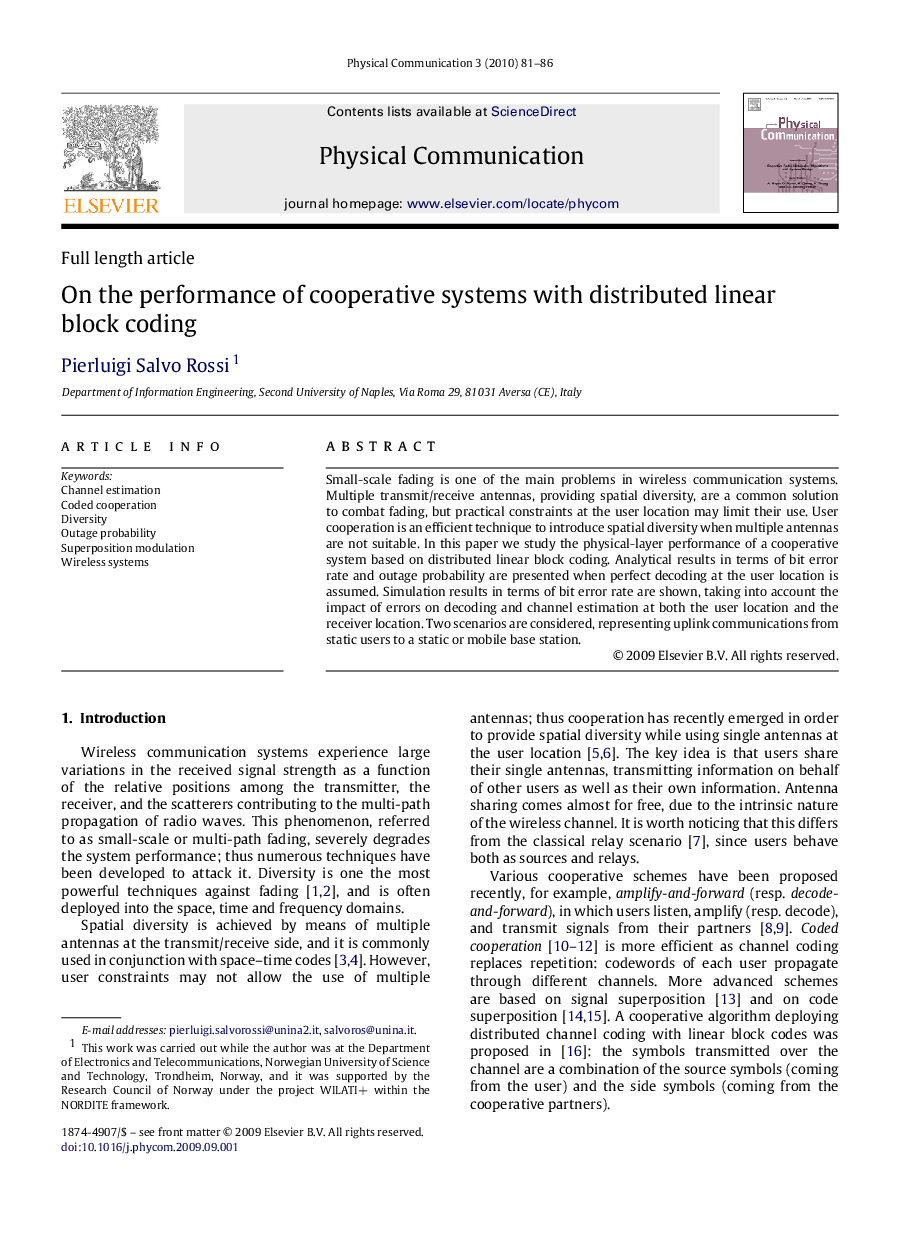| Article ID | Journal | Published Year | Pages | File Type |
|---|---|---|---|---|
| 465204 | Physical Communication | 2010 | 6 Pages |
Small-scale fading is one of the main problems in wireless communication systems. Multiple transmit/receive antennas, providing spatial diversity, are a common solution to combat fading, but practical constraints at the user location may limit their use. User cooperation is an efficient technique to introduce spatial diversity when multiple antennas are not suitable. In this paper we study the physical-layer performance of a cooperative system based on distributed linear block coding. Analytical results in terms of bit error rate and outage probability are presented when perfect decoding at the user location is assumed. Simulation results in terms of bit error rate are shown, taking into account the impact of errors on decoding and channel estimation at both the user location and the receiver location. Two scenarios are considered, representing uplink communications from static users to a static or mobile base station.
